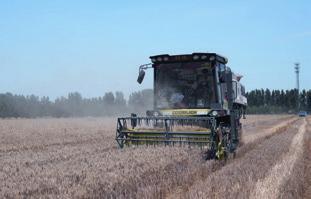Saving Food
2021-09-24ByJiJing
By Ji Jing



Cui Chengxin, head of a rural cooperative in east China, estimated his cooperative had managed to reduce its grain loss rate from 4 to 1.5 percent by using machineries to harvest the crops.
He lives in Jinan, capital of Shandong Province and the host city of the first International Conference on Food Loss and Waste, held both online and offline, from September 9 to 11. The conference, proposed by China at the first session of the 15th G20 LeadersSummit in November 2020, centered on “reducing food loss and waste and promoting global food security.” It aimed to build a global consensus, safeguard the worlds food security and contribute to the zero hunger target the UN has included in its 2030 Sustainable Development Goals.
In his congratulatory letter to the conference, President Xi Jinping called on countries around the world to take swift and concrete action to reduce food loss and waste.
Noting the challenges posed by the COVID-19 pandemic, Xi named food security as a fundamental issue vis-à-vis the existence of humanity, and said that the reduction of food loss is an important way to ensure food security.
Representatives from over 50 countries and regions attended the conference, including agricultural ministers from a number of G20 members such as Italy, the U.S., the United Kingdom, France and Indonesia, as well as diplomats, scholars, corporate executives and others.
A global problem
According to the Food and Agriculture Organization (FAO) of the United Nations, food loss occurs along the food supply chain from harvest/slaughter/catch up to, but not including, the retail level. Food waste occurs at the retail and consumption levels.
At present, food loss and waste are omnipresent. The FAO estimated in one of its annual flagship publications, The State of Food and Agriculture 2019, that 14 percent of the worlds food is lost from post-harvest up to, but not including, the retail level. According to The Food Waste Index Report 2021, published by the United Nations Environment Program (UNEP) and partner organization WRAP, a non-profit organization based in the United Kingdom, an estimated 931 million tons of food, or 17 percent of total food available to consumers in 2019, disappeared into the waste bins of households, retailers, restaurants and other food services.
In the meantime, as the pandemic still rants and raves, heavily disrupting the food supply chain, and extreme weather conditions such as extraordinarily high temperatures, severe droughts and ravaging storms have become frequent, international food prices remain high.
